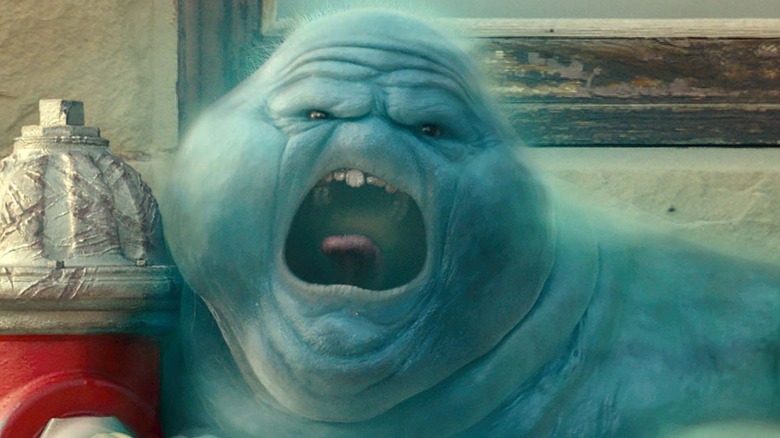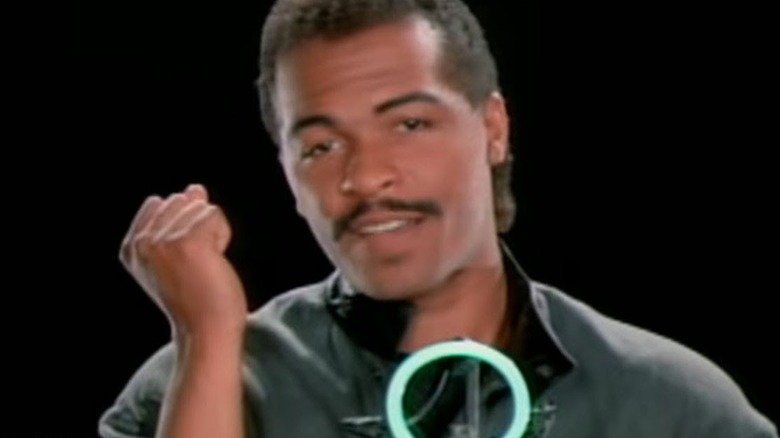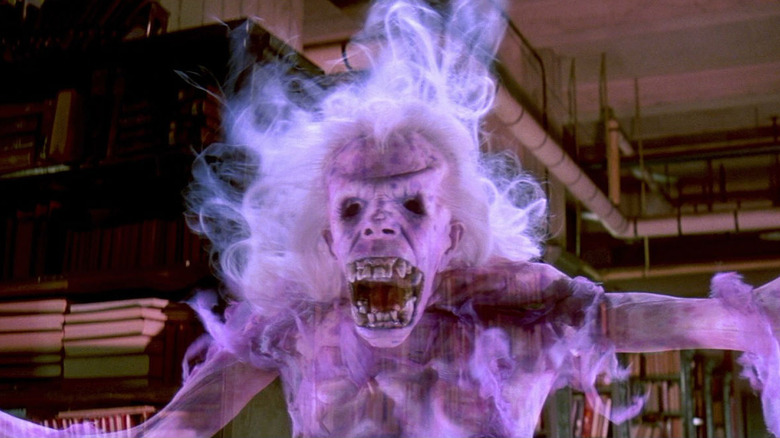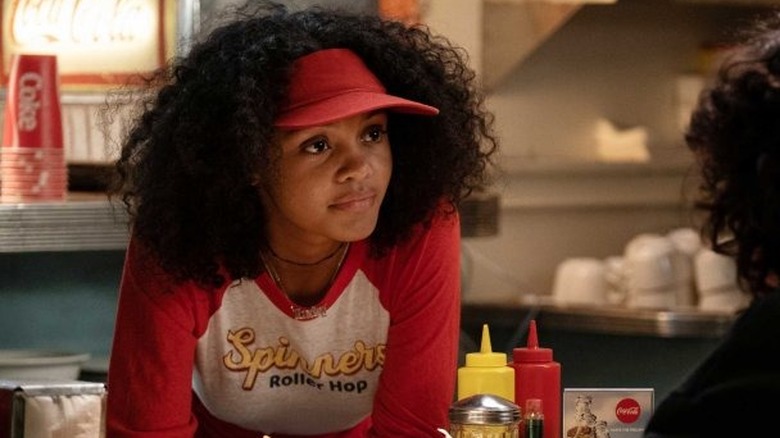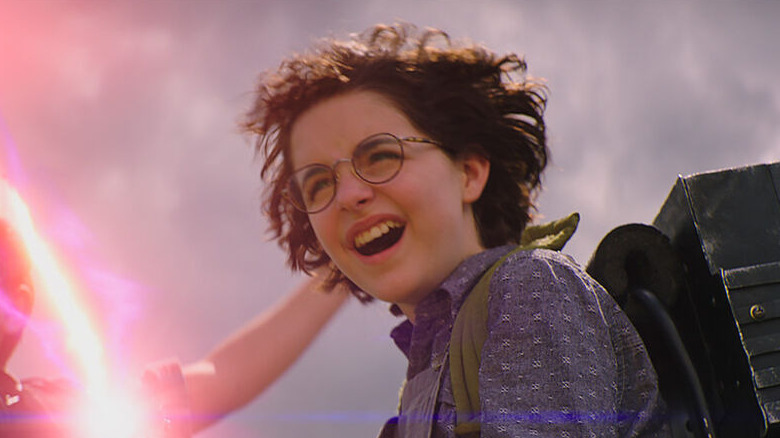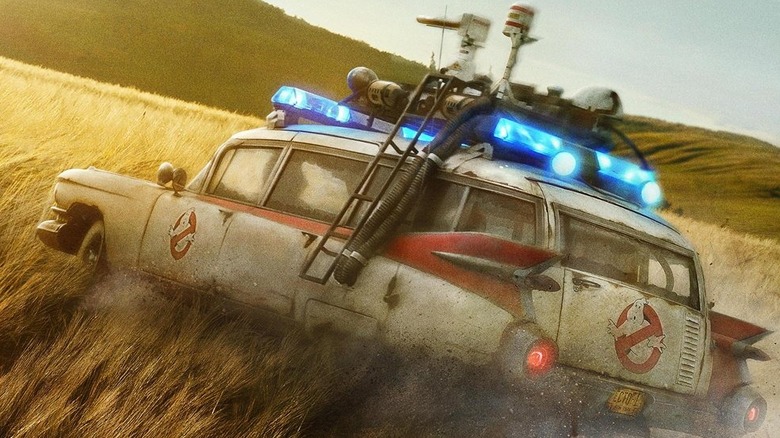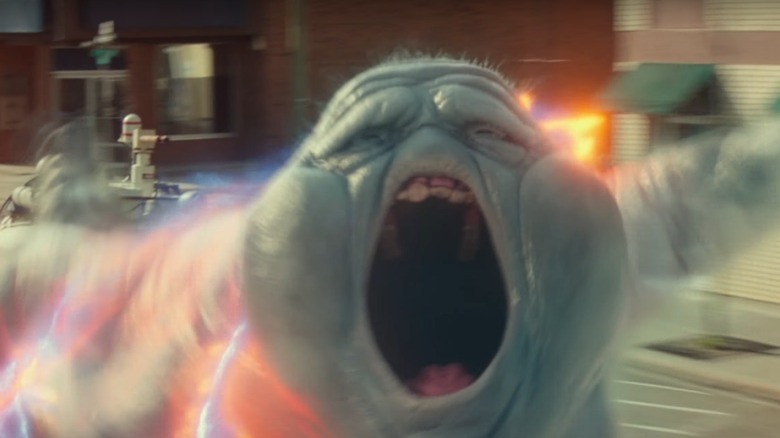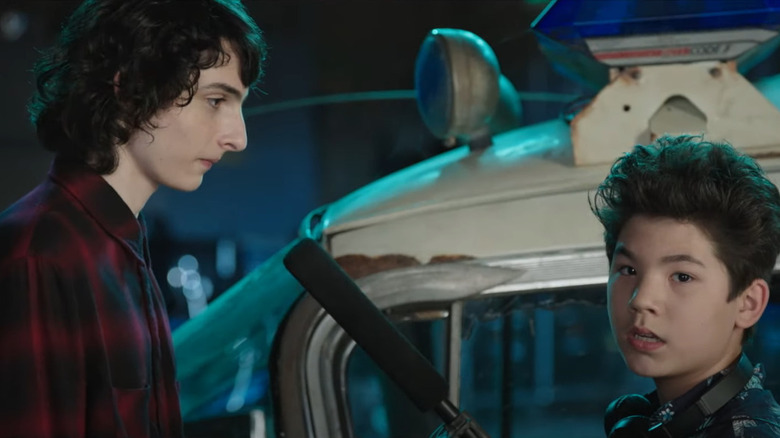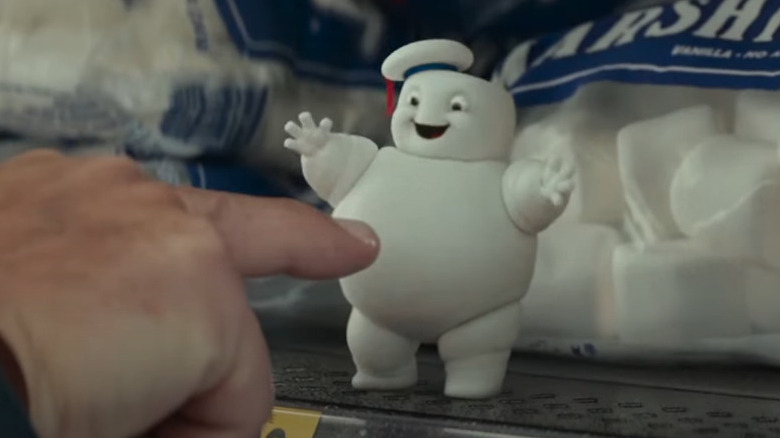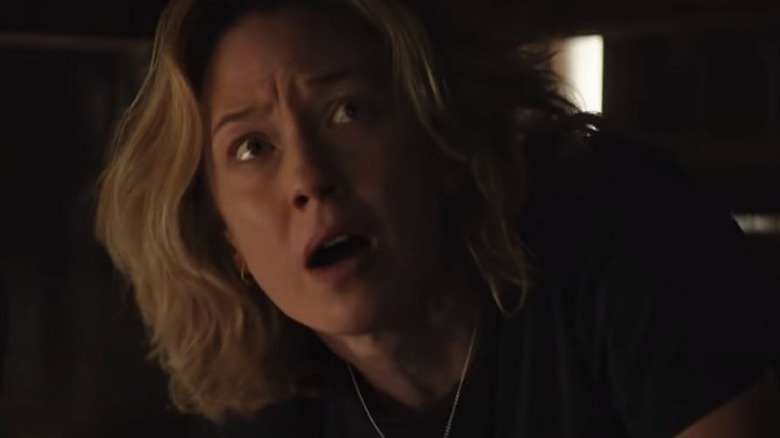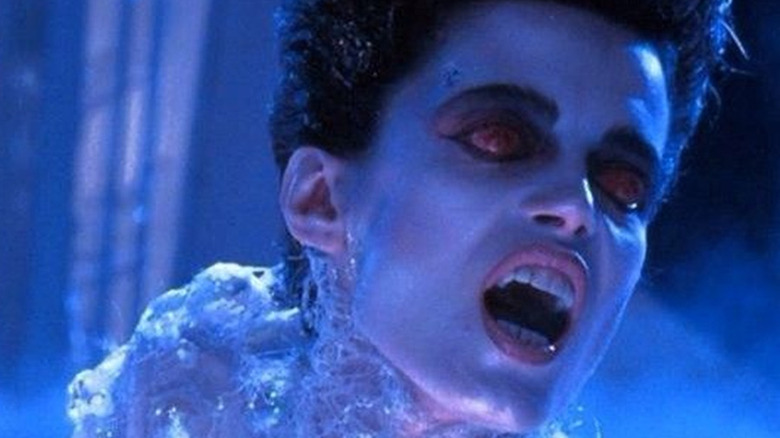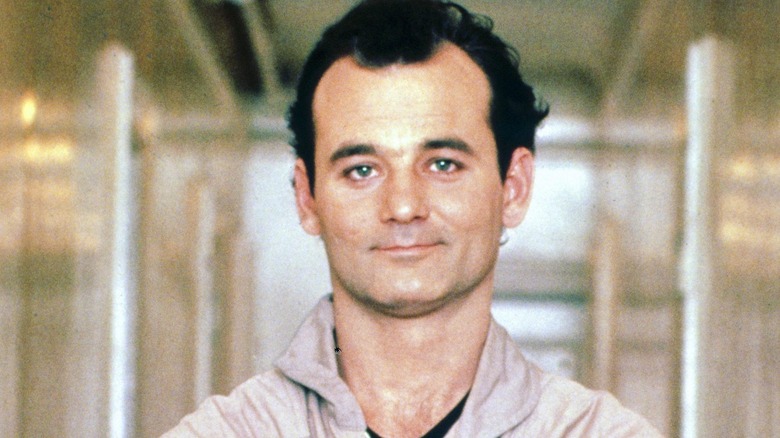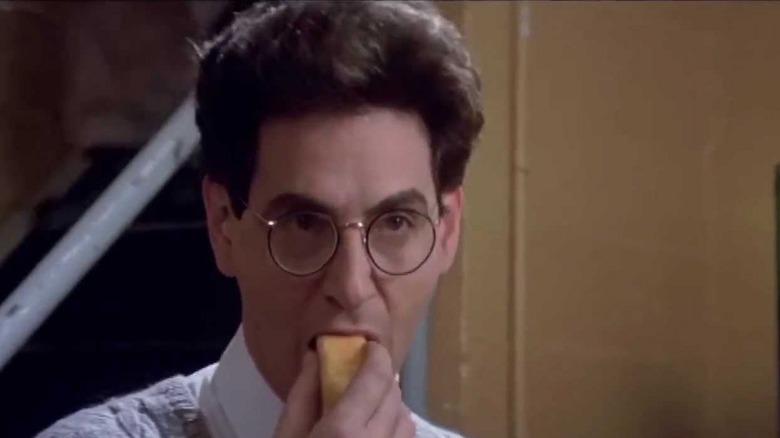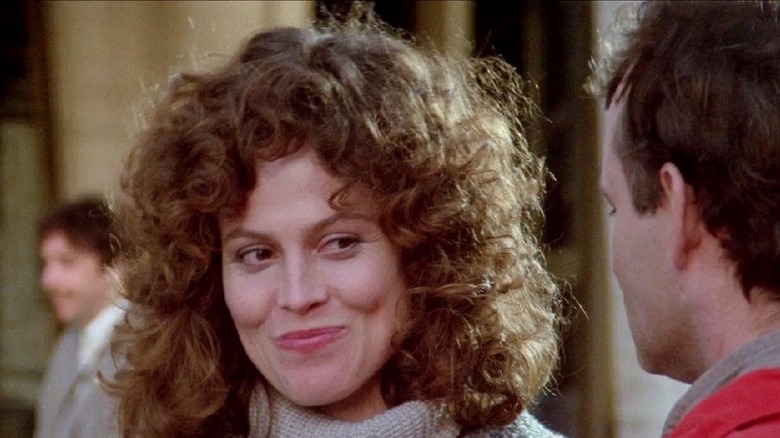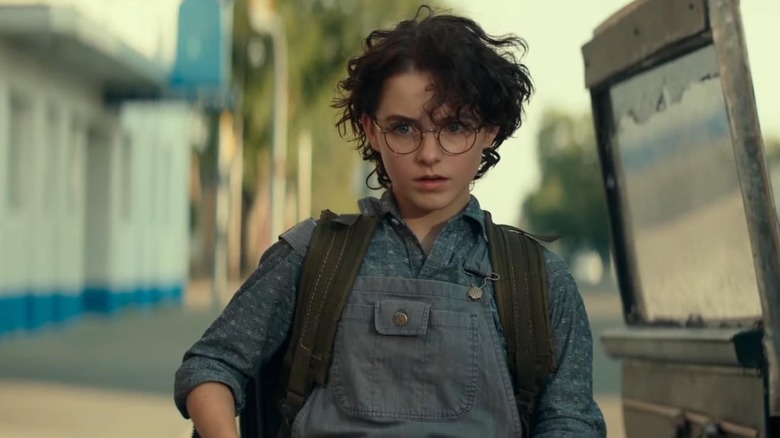The 14 Best Moments In Ghostbusters: Afterlife
The funniest Twitter thread of the year wasn't just a merciless evisceration of how every blockbuster movie trailer feels the same — it was a specific evisceration of "Ghostbusters: Afterlife," which has been sold to audiences as the "serious" counterpoint to 2016's "Ghostbusters: Answer the Call." And while watching Ghostbusters discourse become a haven for sexist trolls has been nothing short of head-spinning, there's zero question that the movies themselves get caught in the crossfire.
"Ghostbusters: Afterlife" is no masterpiece, but neither is it the disaster many have dubbed it. It sees director Jason Reitman craft his first big-budget Hollywood blockbuster, which is reflected in the film's box-office take. It makes stars out of several worthy actors. And it pays loving homage to the Amblin-era works of Richard Donner, Joe Dante, and Robert Zemeckis. Though the trailer for "Ghostbusters: Afterlife" felt bloodless, the film itself has life. Here are 14 awesome moments from "Ghostbusters: Afterlife" (mild spoilers for the movie follow).
Elmer Bernstein's score from the original Ghostbusters kicks in
When you think "Ghostbusters music," you probably think of Ray Parker Jr. He ain't afraid of no ghost, busting makes him feel good, and so on. As a film, "Ghostbusters" is hardly a precious or sacred text, but the song actually might be. When Fall Out Boy and Missy Elliot tried to modernize its magic for "Ghostbusters: Answer the Call," it felt cursed and wrong.
But Parker's "Ghostbusters" isn't the only great "Ghostbusters" music — there's Elmer Bernstein's score, too. With its bouncy pianos, frequent theremin stabs, and general sense of mischief, it's the secret weapon of Reitman's original movie, one that frequently keeps the film on track. Which is why the second that score reappears in "Ghostbusters: Afterlife" via composer Rob Simonsen, everything feels awesome.
Nostalgia for the original "Ghostbusters"? That's easy. Making proton packs feel cool again? Sure. But knowing that your audience loved a score that's fallen out of vogue but not memory is more than trite retro-mania. It's a well-considered labor of love. It rules.
The opening prologue
Every child has their own private nightmare fuel, something that burrows in their brains and sets a cold flame burning. For some, it's death itself. For others, it's clowns. For me, it was a librarian who abhorred noise and told the Ghostbusters to shush. Do you remember this moment? I bet you do. I bet it scares you even now.
So, it thrills me to report that the prologue of "Ghostbusters: Afterlife"' is awesome because it's scary. It's full of well-built, mercenary dread, the sort that starts with quiet, wind-swept plains and ends with finger daggers stabbed through a recliner. The sequence is tame by modern horror standards, but as an Amblin-era homage? It lands and will likely linger with children.
And that's partially the point, is it not? "Ghostbusters" was a film for all ages, at least by 1984's standards. Director Jason Reitman gets that. He was six when it came out — and he's made sure that "Ghostbusters: Afterlife" will haunt a whole new generation of kids (and a few adults) in the same way.
The Spenglers visit Spinners
"Ghostbusters: Afterlife" is in conversation with its own nostalgic navel-gazing and this country's. Neither of these conversations are particularly deep, but you don't plant an ancient Sumerian menace in the heart of a flyover town if you aren't somewhat wary of the wistful ways our past can be romanticized. Need further proof? Just watch the scene where the Spenglers visit Spinners.
Spinners is a 50's-style drive-in diner, the kind where waiters still deliver orders via roller-skates and doo-wop music plays unironically. "I can't believe one of these still exists," Callie Spengler (Carrie Coon) gasps, her big city bias showing. It's also a building in disrepair, one in need of care, not admiration. Spinners indicates that Summerville, Oklahoma is stuck in a past that is both romanticized and rotting, and the consequences of that slow decomposition (ignored by all in town) almost end the world entirely. The film fails to take the conversation that it starts anywhere interesting, but it still has some nifty thematic resonance.
Beyond that? The scene is funny. Very funny. "Carrie Coon says a single word and you almost fall out of your seat gasping" funny. That and the not-just-scenic-dressing that surrounds it combine to make a truly memorable moment.
The kids test proton packs
Three things are certain in life: death, taxes, and that no other movie with a supernatural sex scene has sold as many children's toys as "Ghostbusters." If you grew up between the years of 1984 and 1995, chances are that you had Ghostbusters-branded stuff. There was Hi-C's Ecto Cooler. There were scores of action figures. Most importantly, there were proton packs. A triumph of physical and sonic design, the spirit-snaring tool from Ivan Reitman's classic inspired more pretend ghostbustings than Walter Peck could wave a finger at.
So, it's easy to assume that the scene where Phoebe and Podcast test the proton pack is a teary-eyed homage to those childhood play sessions. But there's a whole new generation of "Ghostbusters: Afterlife" viewers who have never heard a proton pack whir to life, or imagined using one to trap a poltergeist. After watching two kids explode some bottles with a blast of purple and orange light, they're almost certain to. That, and the scene itself, is awesome.
Joyriding in Ecto-1
"Ghostbusters: Afterlife" isn't half as transgressive as 1984's "Ghostbusters." It's not really aiming to be. If anything, it uses the original film's sense of mischief as a foundational comic building block, but it also understands that the older movie employs its unique sense of humor because it's lead characters are men in arrested development. Scientists who make silly jokes about genitalia — the concept's still pretty funny.
The leads of "Ghostbusters: Afterlife" are only partially scientists. One is a teenage boy named Trevor (Finn Wolfhard) who's mostly aimless. He needs stimulation. He needs trouble. So, when Trevor hotwires the old '59 Cadillac that has been sitting in his grandfather's garage, he does the most transgressive thing a teenage boy can do — drive it within an inch of its life.
As "Boredom" by The Buzzcocks booms and Trevor careens the Ecto-1 through fields of corn, deliriously mowing down husk after husk, the movie strikes a chord that Peter Venkman would be proud of. After all, ghosts hate chords; it's fitting that their opponent get a good one.
Hunting Muncher
In his brutal review of "Ghostbusters: Afterlife," Sean Burns observes that "for a not insignificant portion of American men in their 30s, Ivan Reitman's enjoyably silly and irreverent 1984 'Ghostbusters' has become some sort of sacred Jedi text, the inanely involved Aykroyd arcana regarded on the same level as Tolkien or 'Dune,' despite the fact that everybody in the movie was making fun of it most of the time."
This is, assumedly, why swathes of aggressive men review-bombed "Ghostbusters: Answer the Call." It's theoretically to blame for "Ghostbusters: Afterlife" basically being the Ghostbusters equivalent of "The Force Awakens." But "Ghostbusters: Afterlife" doesn't really revere 1984's "Ghostbusters" as much as '80s youth cinema itself.
Richard Donner's "The Goonies." The work of Joe Dante. "Ghostbusters: Afterlife" channels both pretty explicitly, along with Amblin Entertainment-era Spielberg, whose fingerprints haunt the Muncher-hunting sequence like a specter. The Spengler children and Podcast, left to their own devices by the adults, chase after the blue-hued ghost in Ecto-1, carving a path through Summerville's downtown. As Phoebe mans the gunner seat, Trevor recklessly drives after the metal-spewing spirit, and Podcast steers a remote-controlled ghost trap under his phantasm foe, the scene hits the same highs that made films like "Back To The Future" and "Who Framed Roger Rabbit?" so enjoyable.
Yes, it's a Spielberg homage, but it's not precious about it. Unlike the ghost the Spengler kids are chasing, this sequence has a pulse of its own. It deserves its ecstatic due.
The kids channel the Goonies in Shandor's mine
If the Muncher sequence is Jason Reitman in full-on Spielberg mode, then the Spengler kids and Podcast going deep into Shandor's mine is him shamelessly cribbing from Richard Donner. Seriously, tons of "Goonies" elements are present: old and rickety methods of transportation, a buried chamber of secrets, and a wholesome adventure that suddenly begins endangering the children's lives.
"Afterlife" is playing the hits. That said, the hits are effective. This sequence reveals why the town of Summerville has been beholden to frequent earthquakes and the reason is less clichéd than most will anticipate. What's more, the moment finds room for practical make-up effects and epic sets that balance out the impressive CGI, making it feel like a marriage of older and newer blockbusters. There are fine lines between rip-offs, homages, and straight-up emulation, but the mine sequence of "Ghostbusters: Afterlife" is squarely the latter, to great effect.
The Mini-Pufts wreck Walmart
The mini Stay-Puft Marshmallow Men were one the first components of "Ghostbusters: Afterlife" that got shredded by the internet. Some loathed them. Others — including Bill Murray — found them adorable. But now that Jason Reitman's film is out, it appears both camps misjudged the tiny versions of the original "Ghostbusters" big bad. Here, they're less evil than they are agents of chaos, even unto themselves.
The Mini-Pufts appear in one or two other sequences, but their featured scene comes when they all but decimate Summerville's Walmart. More importantly, they decimate each other. The Mini-Pufts are seen making s'mores out of their brethren, leaving each other on the grill, and testing a blender's blade by putting other Stay-Pufts in its path.
That the Mini-Pufts survive all this is both hysterical and disturbing; that the film commits to their rampage without softening the violence is both awesome and uproarious, a close cousin to the sophomoric but well-crafted chaos that made the franchise instantly popular almost 40 years ago.
Carrie Coon transforms into Zuul
"Ghostbusters: Afterlife" understands what more movies should: Carrie Coon is the coolest person in the room, no matter who else is with her. As Callie Spengler, Coon is given license to be sharper, more alluring, and funnier than her very talented co-stars. She sticks the landing of every sequence that she anchors, be it getting evicted from her apartment or becoming possessed by Zuul. Yes, that Zuul, the one who memorably occupied the mind, body, and spirit of Dana Barrett in "Ghostbusters."
Before Coon is transformed into a demonic dog, it isn't clear how many beats from "Ghostbusters" Jason Reitman plans on repurposing. Admittedly, the reemergence of Zuul is something of a disappointment when compared to the film's original creatures. But when the Spengler children burst into their grandfather's home to find their mother frozen stiff, only able to whisper, "There is no mother, only Zuul"? The hairs on my neck went straight to standing.
Coon effortlessly shifts from a caring parent to a frightening heavy in the span of six words. It's a brief but awesome transformation, and one that reveals that Carrie Coon is, in fact, a master of her craft.
Gozer rips Ivo Shandor in half
I think "Ghostbusters: Afterlife" is smarter and less obnoxiously reverent than most other critics. That said, I'm no fan of bringing Gozer back. It's a gesture that works on paper but collapses quickly in practice. If the younger Reitman's film is meant to thread the needle between three generations of viewers and Ghostbusters alike, the ghosts should similarly combine the new with a sense of and ghostbusting history. As such, Gozer is only as good as the bad guys by her side.
For a moment, it appears as though one of those new villains is J.K. Simmons, which is good!. The "Whiplash" star is never less than incredibly memorable, and he makes an indelible impression in the second act of "Ghostbusters: Afterlife" as the coffin-bound Ivo Shandor. Shandor, a wealthy industrialist (and not-so-secret acolyte of Gozer) built a set of mines in Summerville, Oklahoma that function as a makeshift Hellmouth. For the last 200 years, Shandor was to Gozer what Dr. Janosz Poha was to Vigo the Carpathian, even while dead and buried.
Shandor has ties to the '84 "Ghostbusters," but he's a new on-screen presence, and he's played by a charismatic and talented actor. By the standards of "Afterlife," he appears to be a perfect villain. But disappointingly, his presence is very short-lived. Shandor is resurrected when the Key Master 2.0 frees Gozer. He rises to pledge his loyalty, and promptly gets ripped in half. Heck yes. Gozer was more of a necessary evil than a real threat in "Ghostbusters"; and yet, for this one brief moment, Gozer is suddenly scarier than any other family-friendly villain ever.
Bill Murray riffs as Venkman once more
Bill Murray has always exuded a subdued comic recklessness. He is always in control, even when he isn't. He's a clown secretly acting as maestro, controlling the tempo of the jokes being made both by him and those around him, conducting the flow of both with care. He's as much a Leonard Bernstein as he is a John Belushi, because when Bill Murray appears in a movie for comedic purposes, the entire ensemble plays their notes differently.
So, when Bill Murray does in fact show up alongside Dan Ackroyd and Ernie Hudson in "Ghostbusters: Afterlife," you know that laughs are coming. What you probably aren't prepared for is Murray playing conductor again. In films like "Zombieland," he's a guest artist. In the work of Wes Anderson, he mostly plays second chair (mostly). Here, he briefly runs the show, taking all its solos. Venkman's confrontation with Gozer could have been the height of rank nostalgia, but it isn't because Murray's in tune with his own, brilliant instrument. The scene sings. Welcome back, maestro — take a bow.
Egon Spengler's big goodbye
When a two-year old tweet from Fangoria editor Phil Nobile Jr. resurfaced right as "Ghostbusters: Afterlife" opened, I assumed the worst about "Ghostbusters: Afterlife." It was hard not to. The tweet in question was Nobile's prediction that the oft-delayed sequel would feature a "ghoulish CGI Harold Ramis," a decision that would be uncomfortable by almost any standard. Thankfully, that tweet trended for all the wrong reasons.
Yes, Harold Ramis' Egon Spengler appears in "Ghostbusters: Afterlife," but the movie goes the "Halloween Kills" route to good effect, casting no less than celebrated character actor Bob Gunton to fill Ramis' shoes with the help of expansive makeup. More importantly, it never asks him or anyone who sounds like Ramis to speak.
This is more than an artistic decision — it's a resonant one. When a person who is important to any group of people passes, those left behind are wont to say the world has lost their voice. By leaving Egon Spengler silent, Jason Reitman and "Ghostbusters: Afterlife" acknowledge that, even if cinema magic lets us say goodbye to someone we've lost, they are gone. Nothing lasts forever. People, franchises, characters — everything comes to an end.
The mid-credits sequence
"Ghostbusters: Afterlife" has two post-credit scenes. In the more substantial one, Winston Zeddemore (Ernie Hudson) uses the wealth he's accumulated after the end of his ghostbusting career to reopen the crew's old Tribeca firehouse, presumably paving the way for further sequels. In the other, Dana Barrett (Sigourney Weaver) shows up to torture Peter Venkman with the same ESP test he administers to hapless college students at the beginning of the original film. Their relationship status is unclear, but given Dana's wedding ring and their flirty banter, it seems likely that they're still a couple.
It's a great moment, not only because of the return of the eternally excellent Sigourney Weaver, but also because it acknowledges that the relationship between Dana and Peter was always the heart of "Ghostbusters." What could have been a rote plotline became a template from which to build better romances in '80s comedies. Thirty-seven years later, the chemistry between Murray and Weaver still feels effortless and, unlike some of the film's more forced homages, it's absolutely unfussy. It's lovely to see.
Everything Mckenna Grace does
It's easy to forget that one of the primary contributions that "Ghostbusters" made to pop culture was transforming its cast into massive stars. Yes, every actor in Ivan Reitman's original, from Murray to Rick Moranis, had an elevated profile before the film was released in 1984, but after it? Each was iconic. "Ghostbusters" took everyone involved to the next level.
So, one of the — if not the — most awesome thing about "Ghostbusters: Afterlife" is what it does for Mckenna Grace, the film's star and emotional anchor. The film propels her straight to the A-list. Grace is the funniest performer in a film that includes Bill Murray and Paul Rudd. She is the most affecting actor in a cast that includes noted thespian Carrie Coon. She carries a franchise on her back with such ease that you'd think she'd done it before (which, of course, she has). And none of this accounts for the closing credits song, which she performs as if film stars are meant to drop pop hits when they aren't top-lining blockbusters.
"Ghostbusters: Afterlife" is the moment when Mckenna Grace arrives; long may she stay.
